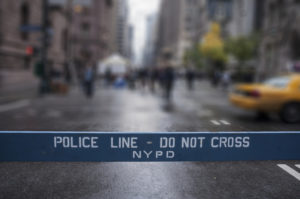Safe Places Report No. 1
The rampage of rioting and looting across the nation, combined with the Covid-19 pandemic, have turned our thinking about big cities upside-down. Whereas they were previously seen as the epitome of a civilized and exciting life, today they are viewed as harbingers of violence and death. That’s quite a turnaround.
Granted, once life returns to “normal” most people who live in big cities will opt to stay there, and they will probably convince themselves that this is borne out of necessity—jobs, family, the costs and burdens of relocation. But the smart ones will start making plans now for the big move and stick to it—and I hope that includes you.
Big cities are the last place you want to be when the next crisis comes—and the apocalyptic possibilities don’t seem that unthinkable now that our cities have faced the double whammy of riots and pandemic. Whether it’s another pandemic, cyberwar, biological warfare, or good old-fashioned nuclear war—or, for another possibility, the breakdown of society and an explosion of crime and violence due to depression and hyperinflation—you don’t want to be one of those ants stalled on the expressways trying desperately to get out at the last moment. You want to be safe and secure in your Safe Place.
Even if you presently live in a metropolitan-area suburb, you’re not out of danger. When the panicked mobs are fleeing the big city, the first place they’re liable to see—before their automobile runs out of gas—may be your comfy suburb and single-family home. And it will be a look of envy and desperation.
I don’t say this with pleasure. I’ve lived most of my adult life in Washington, D.C., and New York City, and took full advantage of the pleasures they gave me. My favorite cities to visit were San Francisco and Los Angeles. But that was then, and we are now living in a new era.
And I don’t say this to disparage the people living in big cities. I treasure my memories of the wonderful people I knew in those cities, especially the New York of my youth. But we were living in good times, normal times. When super-crises hit—and they are becoming more probable and frequent—those crises bring out the best and the worst in people. That’s true anywhere, even here in the good old U.S.A. And the big cities have more than their share of the worst, as has become obvious in recent weeks.
A Long Time Ago, in Another Century…
I started my career as a book author in 1972 with the publication of Safe Places. Cities had been in flames after the Martin Luther King assassination, and crime rates were exploding. The reception was so enthusiastic, I followed this with several more Safe Places-themed relocation books, and that jump-started the publishing genre of finding desirable places to live. (Publications like U.S. News & World Report then made a lot more money off that theme than I did.)
My USP—Unique Selling Proposition in marketing parlance—was that I would discover places that were safe in terms of crime and also desirable places in which to live because of their vibrant community life. After all, even criminals are not interested in dying communities where there’s nothing worth stealing.
So far I’ve done extensive travel in 49 of our states. (I’m saving the best for last—hopefully this summer after travel has resumed.) I’ve probably driven over a million miles, investigating thousands of communities and rejecting all but the best.
This is the mission of my life. And it’s what I will bring to you in this series of Safe Places reports for RichardCYoung.com. We will consider what features to look for in your potential new home, ways to find the places that are tailored to you and your family’s specific needs and desires, and how to make the move when you find one.
We are blessed to live in a vast nation that offers an unparalleled variety of climates, topography, and people of endless backgrounds. This is also a nation where new beginnings are not only possible but encouraged. Let’s make this exciting journey of discovery together.





